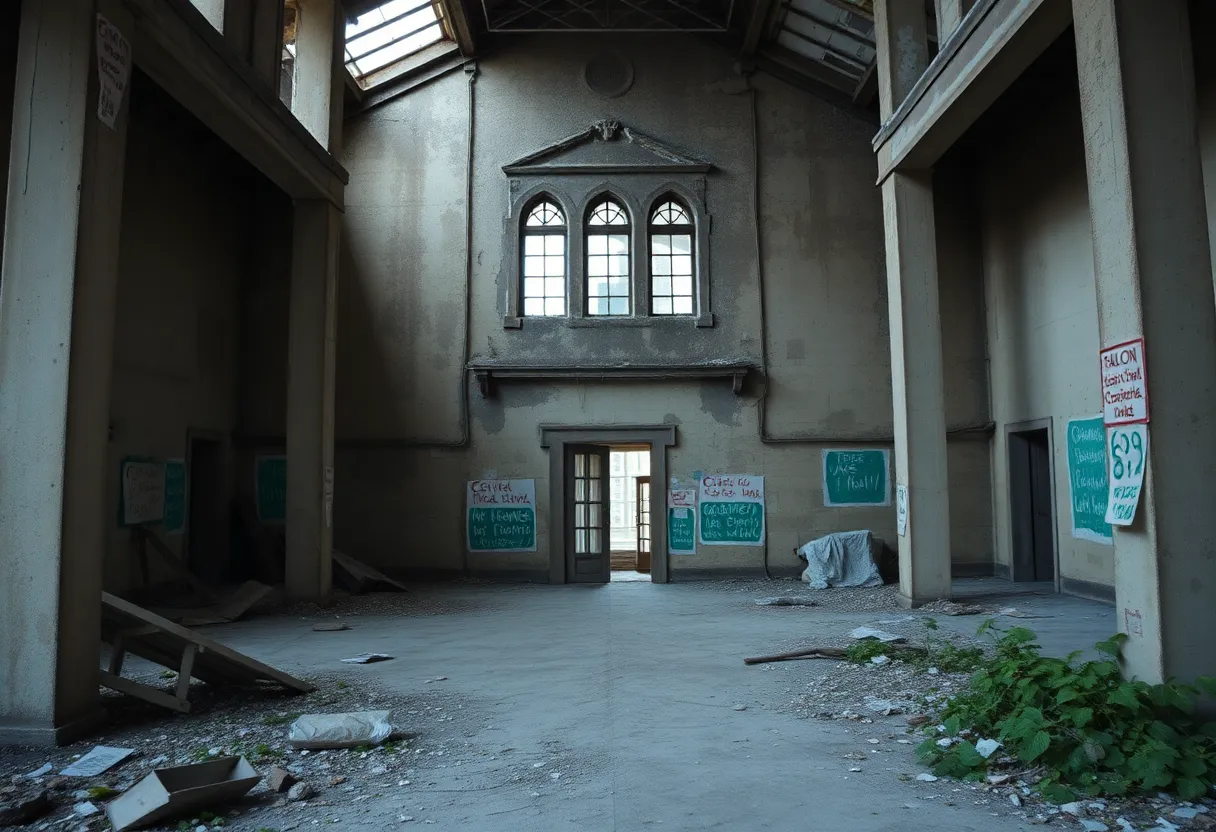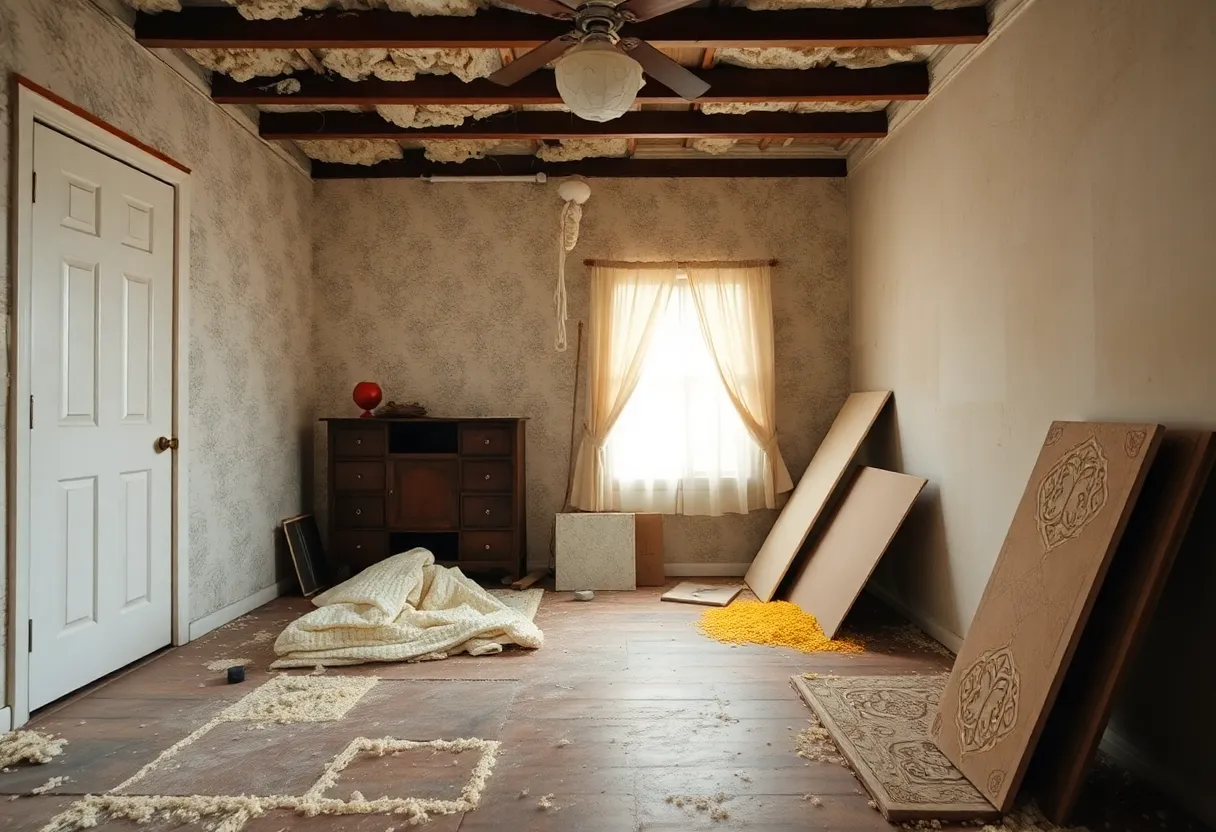News Summary
Brian Chidley’s story highlights the dangers of asbestos exposure and its devastating effects on health, echoing the broader fight for asbestos awareness.
Tragic Legacy of Asbestos: The Case of Brian Chidley
A heart-wrenching story has emerged from the UK, drawing attention to the dangers of asbestos exposure and its devastating impacts. Brian Chidley, a former scientific officer at the UK Atomic Energy Authority (UKAEA), passed away in May 2022 at the age of 89 after succumbing to mesothelioma, a form of cancer directly linked to asbestos exposure. With his family now seeking answers about the conditions he encountered during nearly four decades of service at UKAEA, the tale of Chidley’s life prompts a deeper examination of asbestos risks in workplaces across the globe.
Your Career in Danger
Chidley joined UKAEA in Harwell in 1956 and dedicated 39 years of his life to the organization until his retirement in 1995. Beginning his career as an assistant experimental officer, he steadily climbed the ranks to become a senior scientific officer. His later years at UKAEA were particularly significant as they coincided with the decommissioning of the Harwell site, a complex process rife with potential dangers associated with outdated materials, including asbestos.
The Silent Killer
Brian Chidley’s health took a tragic turn when he began experiencing recurrent breathlessness. It was during a hospital visit that he was diagnosed with mesothelioma. Once an active and intelligent individual, he faced the stark reality of a cancer that could have stemmed from working conditions at UKAEA that hastened his demise. Chidley’s family describes him as a dedicated husband and father, devastated by the loss of this brilliant individual, whose passion was overshadowed by his untimely death.
Family’s Fight for Answers
In the quest for closure and understanding, the Chidley family has enlisted the help of specialist asbestos-related disease lawyers at Irwin Mitchell to investigate the circumstances that may have contributed to Brian’s illness. There remains uncertainty regarding the specific conditions under which Chidley worked, particularly concerning asbestos. His son Chris has noted that while the memory of his father mentioning asbestos lingers, the details are murky, prompting an appeal to former colleagues of Brian to come forward with any pertinent information regarding their time working together.
The Wider Implications
The Chidley family’s pursuit of justice echoes a broader environmental and health crisis that persists across various industries worldwide. With asbestos still lurking in many older buildings and equipment, the vigilant monitoring of occupational safety remains paramount. Brian Chidley’s heartbreaking story reinforces the need for comprehensive accountability regarding asbestos exposure, making it evident that protecting workers from hazardous materials should be a top priority.
The Pink House: A Symbol of Conflict
In a separate but related narrative unfolding in Massachusetts, a historic landmark known as the Pink House at 60 Plum Island Turnpike has become embroiled in controversy due to environmental hazards. Built in 1925, the two-story, three-bedroom structure has remained unoccupied for decades, leading the U.S. Fish and Wildlife Service to classify it as a safety hazard, citing concerns over lead-based paint, mold, and asbestos.
Controversial Demolition Plans
With the Pink House deteriorating, initial demolition plans were put in place, driven by safety concerns and the lack of interest for auctioning the property. Yet, local activists have passionately rallied around the house, arguing that it draws tourists and artists and offers economic benefits to the community. As discussions about its future progress, the fate of the Pink House becomes a tug-of-war between safety and nostalgia.
A Landmark at Risk
The Pink House is steeped in local lore as a “spite house,” adding to its allure. Although it is not registered on the National Register of Historic Places, its historical presence has sparked initiatives aimed at preserving it. Advocates have fought to prevent its demolition since 2016, seeking alternatives that would allow for its relocation or careful restoration.
A Path to Resolution
The ultimate goal revolves around finding a solution that respects both conservation efforts and the community’s cultural interests. Should the house be demolished, plans are in motion to transform the area into a public park, complete with educational panels and benches. Balancing safety with the preservation of heritage poses a challenge to local authorities, but the persistent efforts of the community and concerned citizens continue to shed light on the value of historical structures, even those fraught with hazards.
As the stories of Brian Chidley and the Pink House unfold, they serve as crucial reminders of the balance required between progress, safety, and a commitment to honor our past. The impacts of asbestos—and the need for awareness surrounding it—remain as relevant today as ever.
Deeper Dive: News & Info About This Topic
HERE Resources
Prishtina Tackles Asbestos with Ambitious New Project
Tragic Loss: Woman Dies from Mesothelioma Possibly Linked to Asbestos Exposure
Former Marine Engineer Sues Over Asbestos Exposure
Wildfires in Altadena Raise Alarm Over Asbestos Exposure and Mesothelioma Risk
Federal Lawsuit Highlights Struggles Against Asbestos Exposure
Emerging Technologies in Mesothelioma Treatment
Health Canada Approves New Mesothelioma Treatment
Veterans and Mesothelioma: A Silent Battle Against Asbestos
Mysterious Malignancies: The Challenge of Treating Rare Cancers
Exciting News: Pembrolizumab Plus Chemotherapy Now Approved for Advanced Mesothelioma!



















